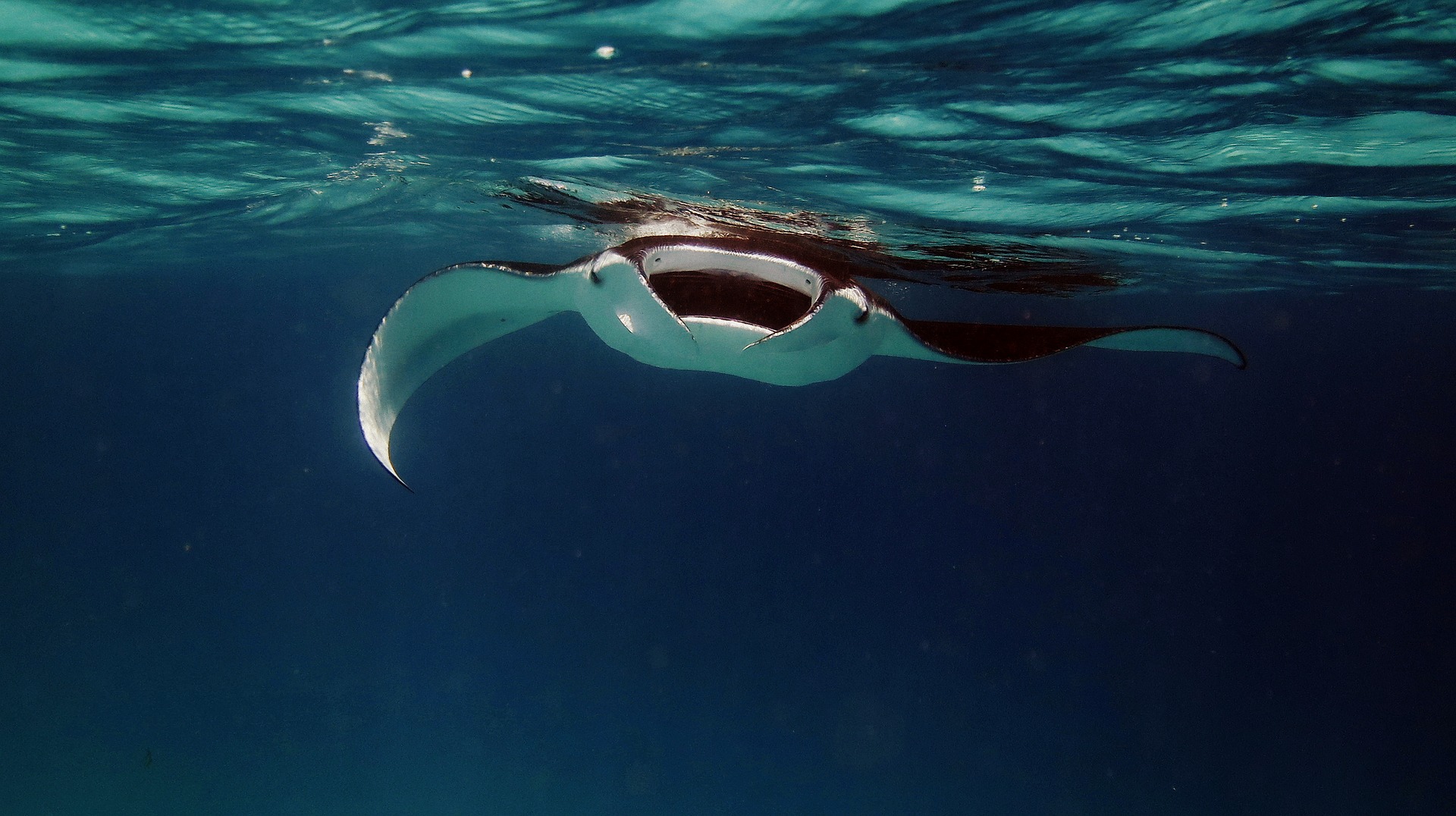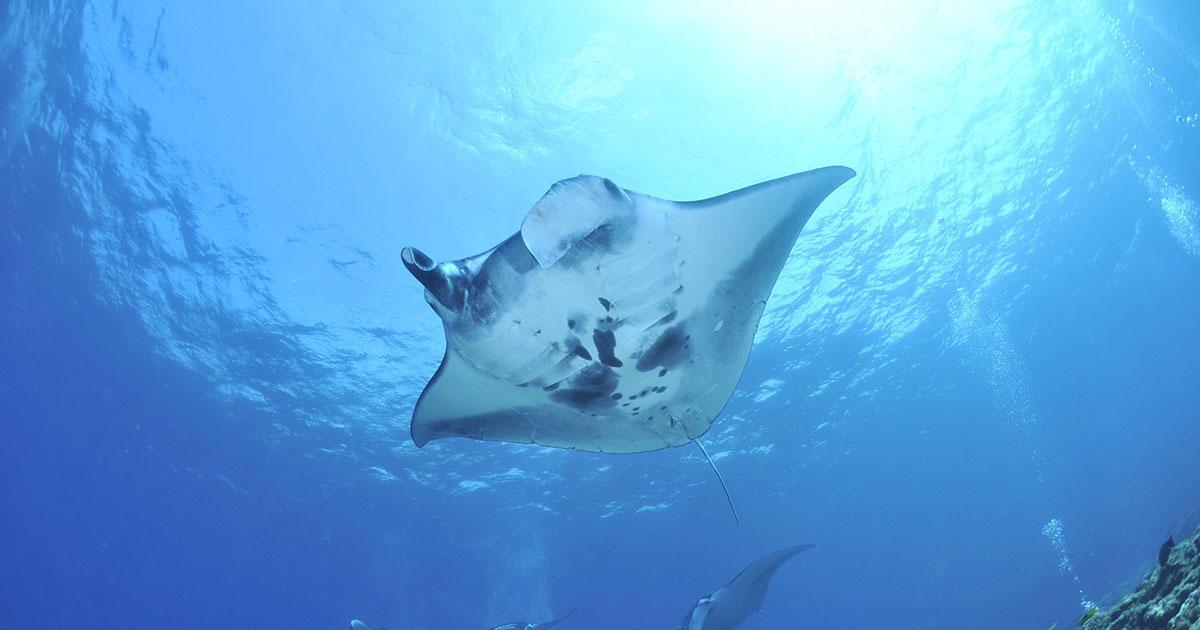The manta ray (Mobula birostris) weighs up to 1580 kg with a span over 9 m and flaunts a hypnotic glide though the water, elegant and stealthy. These characteristics have inspired aquatic engineers to create more efficient bio-robots. Understanding the turning performance of these colossal creatures is fundamental to the manipulation of their manoeuvrability for a robot.
Frank Fish, lead author of the paper published in Experimental Biology, and researchers from West Chester University, Lehigh University, University of Virginia and Dudas’ Diving Dubs conducted a recent study around the island paradise of Yap, part of Micronesia in the Western Pacific. It is the first study to observe manta ray manoeuvres in their natural environment using three-dimensional videography.
 The research was conducted by SCUBA using two video cameras mounted on a tripod. The cameras were synchronised at a location known as a cleaning station at a depth of 24 m. It is thought that this method has produced data with enhanced accuracy and precision of an organism’s manoeuvrability.
The research was conducted by SCUBA using two video cameras mounted on a tripod. The cameras were synchronised at a location known as a cleaning station at a depth of 24 m. It is thought that this method has produced data with enhanced accuracy and precision of an organism’s manoeuvrability.
Fish and his team revealed that mantas ‘demonstrated manoeuvrability and agility that would have been considered uncharacteristic for such large animals’. They distinguished two core approaches in that ‘mantas were able to execute turns by unpowered glides and powered flapping motions’ said the authors. Moreover, the authors noted that mantas are able to bank like planes as they veer.
Researchers recognized that ‘the rigid body of manta rays’ limits turning performance compared with flexible bodied animals’, however, ‘the flexibility in the pectoral fins displayed by the manta allowed these large rays to perform turning manoeuvres at a higher rate than other batoid rays’.
This study provides us with additional information on manta ray manoeuvrability, which will assist in the production of underwater robots to explore previously inaccessible environments in a similar sophisticated manner to a manta ray.
By Margaux Monfared, Institute of Marine Sciences, University of Portsmouth, UK
Journal:
Fish, F. E., Kolpas, K., Crossett, A., Dudas, A. M., Moored, K. W., & Bart-Smith, H. (2018). Kinematics of swimming of the manta ray: three dimensional analysis of open-water manoeuvrability. Journal of experimental biology, 221(6), jeb166041.



